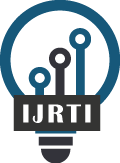|
International Journal for Research Trends and Innovation
International Peer Reviewed & Refereed Journals, Open Access Journal
ISSN Approved Journal No: 2456-3315 | Impact factor: 8.14 | ESTD Year: 2016
Scholarly open access journals, Peer-reviewed, and Refereed Journals, Impact factor 8.14 (Calculate by google scholar and Semantic Scholar | AI-Powered Research Tool) , Multidisciplinary, Monthly, Indexing in all major database & Metadata, Citation Generator, Digital Object Identifier(DOI)
|
Issue: September 2025
Volume 10 | Issue 9
Review Result and Publication of Paper within : 2-3 days
Click Here For more DetailsFor Authors
Forms / Download
Published Issue Details
Editorial Board
Other IMP Links
Facts & Figure
Impact Factor : 8.14
Issue per Year : 12
Volume Published : 10
Issue Published : 112
Article Submitted : 17460
Article Published : 7590
Total Authors : 20140
Total Reviewer : 735
Total Countries : 134
Indexing Partner
Licence
This work is licensed under a Creative Commons Attribution-NonCommercial 4.0 International License







|
Published Paper Details
|
|
| Paper Title: | HMS - Harmful Brain Activity Classification |
| Authors Name: | Shyamli , Prachi , Dr. T R Saravanan |
| Download E-Certificate: | Download |
| Author Reg. ID: |
IJRTI_200282
|
| Published Paper Id: | IJRTI2502037 |
| Published In: | Volume 10 Issue 2, February-2025 |
| DOI: | |
| Abstract: | Electroencephalography (EEG) is a critical tool in neurocritical care for detecting seizures and other forms of harmful brain activity in critically ill patients. However, the current reliance on manual analysis by specialized neurologists presents significant challenges, including time consumption, high costs, fatigue-related errors, and inter-reviewer reliability issues. The HMS - Harmful Brain Activity Classification research aims to address these limitations by developing automated machine learning models for EEG pattern classification. The fundamental objective of this research is to enhance the accuracy and efficiency of EEG analysis in clinical settings. By developing complex algorithms, the project seeks to assist healthcare professionals in rapidly identifying and classifying six key patterns of brain activity: seizures (SZ), generalized periodic discharges (GPD), lateralized periodic discharges (LPD), lateralized rhythmic delta activity (LRDA), generalized rhythmic delta activity (GRDA), and other non-specific patterns. The research utilizes a dataset of EEG recordings from critically ill hospital patients, annotated by a panel of expert neurologists. This dataset is unique in its comprehensive representation of various brain activity patterns, including: Idealized patterns: EEG segments with high levels of expert agreement on classification. Proto patterns: Cases where approximately half of the experts classify the segment as one of the five specific patterns, while the other half label it as “other” Edge cases: Segments where expert opinions are split between two of the five named patterns. This diverse dataset allows for the development of robust models capable of handling a wide spectrum of EEG presentations, from clear-cut cases to more ambiguous scenarios that challenge even human experts. We are challenged to design machine learning models that can well predict the probability distribution of expert votes for each EEG segment across the six classification categories. This not only aims at emulating expert consensus but also at capturing intrinsic uncertainty in EEG interpretation, especially when dealing with edge cases or proto-patterns. The project makes use of the Kullback-Leibler (KL) divergence as The primary metric for measuring evaluation is the difference between the probability distribution predicted by the model and the target distribution of expert votes, as observed. |
| Keywords: | |
| Cite Article: | "HMS - Harmful Brain Activity Classification", International Journal of Science & Engineering Development Research (www.ijrti.org), ISSN:2455-2631, Vol.10, Issue 2, page no.a352-a358, February-2025, Available :http://www.ijrti.org/papers/IJRTI2502037.pdf |
| Downloads: | 000339 |
| ISSN: |
2456-3315 | IMPACT FACTOR: 8.14 Calculated By Google Scholar| ESTD YEAR: 2016 An International Scholarly Open Access Journal, Peer-Reviewed, Refereed Journal Impact Factor 8.14 Calculate by Google Scholar and Semantic Scholar | AI-Powered Research Tool, Multidisciplinary, Monthly, Multilanguage Journal Indexing in All Major Database & Metadata, Citation Generator |
| Publication Details: |
Published Paper ID: IJRTI2502037
Registration ID:200282
Published In: Volume 10 Issue 2, February-2025
DOI (Digital Object Identifier):
Page No: a352-a358 Country: Rewari, Haryana, India Research Area: Computer Science & Technology Publisher : IJ Publication Published Paper URL : https://www.ijrti.org/viewpaperforall?paper=IJRTI2502037 Published Paper PDF: https://www.ijrti.org/papers/IJRTI2502037 |
| Share Article: | |
|
Click Here to Download This Article |
|
| Article Preview | |
|
|
|
Major Indexing from www.ijrti.org
| Google Scholar | ResearcherID Thomson Reuters | Mendeley : reference manager | Academia.edu |
| arXiv.org : cornell university library | Research Gate | CiteSeerX | DOAJ : Directory of Open Access Journals |
| DRJI | Index Copernicus International | Scribd | DocStoc |
ISSN Details
 |
 |
ISSN: 2456-3315
Impact Factor: 8.14 and ISSN APPROVED,
Journal Starting Year (ESTD) : 2016
DOI (A digital object identifier)
 Providing A digital object identifier by DOI.ONE How to Get DOI? |
Conference
Open Access License Policy
Important Details
Join RMS/Earn 300
WhatsApp
Click Here
Click Here
Indexing Partner |
|||
| Copyright © 2025 - All Rights Reserved - IJRTI | |||






